
Controlling disease in conventional fish aquariums generally follows a precise set of guidelines familiar to most aquarists. The sequence is detection, identification and treatment. When an infectious disease is detected, some type of intervention is required to eradicate the pathogen. That often results with the addition of medications to the water followed by a standard treatment time. When this happens to novices, it becomes their first lesson on why they need to implement a quarantine system to minimize introduction of diseases to their aquarium. On the other hand, when a similar situation occurs in a mixed community reef aquarium containing saltwater fish and invertebrates including coral, it is a much more complicated situation in terms of instituting a treatment.
There are limitations on how one intervenes when dealing with disease in a reef system. One cannot simply pick up an off-the-shelf medication and add it to the reef aquarium. The toxicity of these chemicals can be lethal to invertebrates and macroalgae. The use of any chemicals to treat aquarium systems must take into account not only the effect on the animals and plants but also any side effects on the filter bacteria. In reef systems, this also means that aquarists have to be cautious about affecting the bacteria established in the live rock. Having to treat infectious disease in a reef aquarium is something that hopefully one can avoid. It is important to focus on preventative guidelines to minimize the possibility of a disease outbreak.
What does one do when a disease occurs in a reef system? Are there chemicals that can be used to treat infectious disease in reef systems? What approach can minimize disease outbreaks in the first place, as treatment can be a complicated, expensive and involved process? This article, while certainly not exhaustive, will try to answer these questions and serve as a starting point for reef aquarists.
Give careful consideration to preventative measures as well as instituting proper treatment procedures if disease is detected in the aquarium. Several important procedures and guidelines must be kept in mind. Of course, the first guideline is prevention through the use of quarantine.
The Art of Quarantine
Quarantine procedures designed to prevent disease introduction are essential to any aquarium. It is of particular importance, however, with reef systems. Once the saltwater fish, corals and other invertebrates have been established, it is best not to introduce any new fish or invertebrates unless they are first quarantined. This applies to both captive-bred animals and especially for wild-caught ones.
Newly collected saltwater fish and invertebrates tend to have lowered disease resistance due to various stressors imposed from capture and transport and are likely to develop diseases easily. In many cases they are already developing a disease upon acquisition.
The use of quarantine methods, appropriate treatment selection and use must be followed carefully for optimal results. Having one or two quarantine aquaria readily available is essential for the reef aquarist. And in the quarantine aquarium one can safely use conventional medications to treat various conditions.
As a general rule, the recommended period for quarantine is four to six weeks, a much longer period of time than the traditional two to three weeks. The longer period of time takes into consideration the various life cycles of different parasites and includes a much larger safety margin for observation once the last signs of a disease have been observed.
It is important to note that because invertebrates can “passively” carry external fish parasites it is also recommended that new specimens should be quarantined in an aquarium without any saltwater fish. Incidences of fish disease outbreaks in aquariums can on occasion be linked to the introduction of invertebrates that were maintained in a reef aquarium with diseased saltwater fish.
Quarantine Treatments
Various types of treatments can be used for saltwater fish during quarantine. At the very least a short-term freshwater dip should initially be used before placing a specimen in the quarantine aquarium. The saltwater fish should be left in freshwater for five to 10 minutes depending on the species. Two treatments spaced one week apart are ample. It is important to note that the water used for the dip must have the pH and temperature of the water adjusted to that of the aquarium.
Aquarists can use freshwater dips with invertebrates such as sea anemones and corals prior to placing them in the quarantine aquarium, but the treatment for a much shorter time period. It is an excellent treatment for many invertebrates that have developed early parasitic disease signs such as an infestation with troublesome turbellarian worms. Corals diagnosed with such infestations can be immersed in a freshwater bath for 10 to 15 seconds depending on the sensitivity of the species. After the dip they can be returned to the holding aquarium.
Avoid Adding Chemicals
The practice of adding medications to the water to treat saltwater fish diseases in conventional aquariums is discouraged in reef systems. Many experts concur in advising against adding any chemicals to reef systems. The major reason is the presence of large numbers of invertebrates, particularly corals and live rock, that form the foundation of a reef system. They are much more sensitive to chemicals at the therapeutic concentrations used to treat major saltwater fish diseases.
Although these chemicals can be used to treat saltwater fish in a quarantine system, they are contraindicated in reef systems. This includes parasiticides, antibiotics and antibacterials. The latter can wreak havoc on the biological filter bacteria if used in a reef system.
Many of the common aquarium medications are quite toxic to invertebrates. Ionic copper medications used to treat saltwater fish diseases are extremely toxic to invertebrates. Saltwater fish can typically be treated with therapeutic ranges of 0.12 to 0.18 mg/L (ppm). However, concentrations as low as 0.05 mg/L are known to be toxic to crustaceans.
Organophosphates containing medications used to treat monogenetic flukes and copepods used at 0.5 to 1.0 ppm are also toxic to crustaceans in doses as low as 0.15 mg/L. Acriflavine, a long-time standby chemical in various multicomponent medications, is also toxic to crustaceans. Toxicity experiments on species of shrimp have shown that it was toxic at a concentration of 1.0 ppm. All the shrimp died within 96 hours of administration.
Formalin has been demonstrated to be generally safe to use with various invertebrate species, primarily with crustaceans. It is commonly used to control epiphytic protozoa such as Zoothamnium and Epistylis. Aquaculture facilities use concentrations from 50 to 250 ppm. However, such concentrations are inappropriate for reef systems. Crustaceans will tolerate 15 to 25 ppm of formalin under most conditions.
Keep in mind that some corals tend to be sensitive to even these concentrations. Use of higher concentrations in some treatment regimens has assumed that high organics and detritus removes substantial concentrations of formalin. While this is likely at extremely high organic and detritus levels, several studies indicated that formalin does not decrease significantly. In one study in seawater at about 75 degrees Fahrenheit, it was shown that formalin concentrations at 50 and 250 ppm and detritus levels up to 100 ppm that therapeutic levels did not significantly decrease.
Malachite green is another chemical useful for eradication of common protozoans on fish at concentrations of 0.10 ppm. It has also been shown to be safe to use with some invertebrates, including sea anemones and crustaceans, but it is toxic to many invertebrate larval forms.
Reef Safe Chemicals: Use Caution
So what about “reef safe” chemicals? There are a number of products that are sold as reef safe treatments. Several are based on herbal extracts, and although they are called “reef safe” many of them have extensive precautions associated with their usage.
One commercial product contains a pepper-based extract, but has a long list of warnings about possible effects on species of coral. Other such products have had mixed results as a therapeutic when used in reef systems. Most don’t have ample background research to support their efficacy. Until medications are developed that have ample research to support their efficacy, it is recommended they not be added to reef systems or that they at least be used with extreme caution.
Regarding treatment with chemicals, as troublesome and inconvenient as it is, it often becomes necessary to remove affected fish or invertebrates to separate facilities for treatments.
Consider Medicated Foods
I favor treating fish in reef aquariums by using medicated fish foods. Of course, this assumes fish or invertebrates aren’t so advanced in an infection that they’ve become inappetant. Commercially available medicated fish foods have been on the market for years.
Not all diseases can be treated in this manner, but bacterial infections and several parasitic infections can be treated using this approach. Various commercial fish foods are available that can be used to treat bacterial infections. It is important not to overfeed. In addition, always continue treatment for at least 14 days.
One excellent broad spectrum antibacterial that is useful for treatment of saltwater bacterial infections is oxolinic acid. A recommended dose added to the fish food is 50 mg/kg. After oral administration, the drug is readily absorbed and distributed with concentration of the drug in the muscles and brain. The drug’s stability post administration indicates that treatment every other day may be all that is needed for bacterial infections.
Two parasiticides that can be added to the fish food to control parasitic problems of reef fish include metronidazole and praziquantel. Metronidazole has been reported to control Amyloodinium and Cryptocaryon when added to fish food. Praziquantel (Doncit) is a veterinary drug that has been found to be excellent for the control of internal cestodes and for controlling external monogenetic flukes. The drug has been used at 2.0 ppm as a bath treatment. For reef systems, however, addition to the fish food would be an alternate means of administration.
Past studies using the bioencapsulation technique has also proved useful for treating diseases using a medicated fish food. In one study, the antibacterial sarafloxacin was first fed to brine shrimp nauplii, then the brine shrimp were fed to the saltwater fish. This approach uses a living microorganism to carry the drug that is fed to the animals under treatment.
When fed sufficient amounts of the brine shrimp, the drug accumulates in the fish, affecting a cure. This technique offers an alternate method to treat fish or invertebrate diseases. Use caution and avoid overfeeding should this technique be used in a reef aquarium. In such cases, excessive uneaten fish food would decay and release medication into the water.
Lower Salinity and Raise Temperatures
A treatment method that has shown success is the combination of lowered salinity with an increase in temperature. It has been successful in both conventional all-fish aquaria as well as reef aquariums. Studies have demonstrated that lowering salinity is effective in parasite control as it interferes in the normal development of parasites such as Cryptocaryon. It also decreases the hatch rate of eggs deposited by various monogenetic trematodes such as Neobenedenia.
The treatment is done by gradually lowering the salinity. Using a calibrated hydrometer, bring the specific gravity to within the range of 1.016 to 1.017 (equivalent to approximately 22 to 24 parts per thousand salinity at 80 degrees Fahrenheit) over a period of 24 to 48 hours. This can be combined with an increase in temperature from 80 to 82 degrees. Sensitive coral species many not tolerate the temperature rise very well due to a decrease in the concentration of dissolved oxygen.
It is important to note that after dilution of the aquarium water you must check the specific gravity on a regular basis to make sure it stays within the correct range. You should also check several water parameters to ensure they are within normal ranges, including pH and alkalinity. It is generally necessary to increase the alkalinity whenever reducing the salinity.
Use caution, as sensitivity to lowered salinity varies depending on species, with corals being particularly sensitive. If conducted in a reef aquarium, two additional precautions are important. First, you need to remove invertebrates, such as starfish, shrimp, sea urchins, nudibranchs and others. They will generally not survive such a treatment. Secondly, sensitive corals (Seriototopora, Montipora and others) in a well-established reef aquarium also need to be removed.
This treatment is not recommended for a novice but only for reef aquarists who have a good understanding of the sensitivity of various corals to environmental changes. You should consult appropriate references prior to utilizing this type of treatment or any other treatment if you are undertaking it for the first time. Maintain reduced salinity for four to six weeks, then gradually increase it to the normal salinity level over a period of a week.
Consider UV Irradiation
Ultraviolet irradiation has been used to treat water in public aquaria for many years to reduce concentrations of various organisms, including bacteria, viruses and protozoans. While optional in most conventional aquaria, it can be useful in reef aquaria.
Although many experts are divided in their opinions on the advantages of using UV in saltwater systems, nonetheless, it can effectively reduce potentially harmful organisms. But it has limitations in that one cannot expect it to reduce the number of potentially infectious organisms. Consider using UV as a preventative measure rather than a cure for an existing infestation.
Bear in mind that it will only eradicate free-swimming forms of parasites, viruses and bacteria. Ample studies have been performed to show that systems equipped with UV are capable of substantially reducing pathogenic bacteria, including Aeromonas, Pseudomonas and Vibrio, but not totally eradicating them. Effectiveness of UV sterilizers is based on a number of factors, including the presence of suspended organics, contact time and flow rate. Such systems are especially useful in larger quarantine facilities.
Conclusion
The treatment of reef systems presents a number of obstacles when compared to the treatment of conventional systems that contain only saltwater fish. The sensitivity of various invertebrates as well as the nitrifying bacteria contraindicates the practice of adding chemicals to the water. Saltwater aquarists must first and foremost focus on preventative approaches to disease control in reef systems.
George Blasiola is a marine biologist and has written for FAMA since 1979. He is the author of The Saltwater Aquarium Handbook and Koi: A Complete Pet Owners Manual. He is an annual lecturer at the Fish Health Management Course at North Carolina State University in Raleigh.
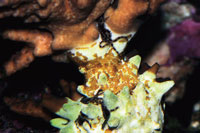 Coral and Invertebrate Quarantine Procedures
Coral and Invertebrate Quarantine Procedures
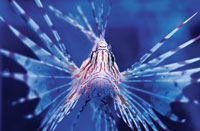 Invasive Aquatic Species
Last column, we discussed invasive species and the potentia
Invasive Aquatic Species
Last column, we discussed invasive species and the potentia
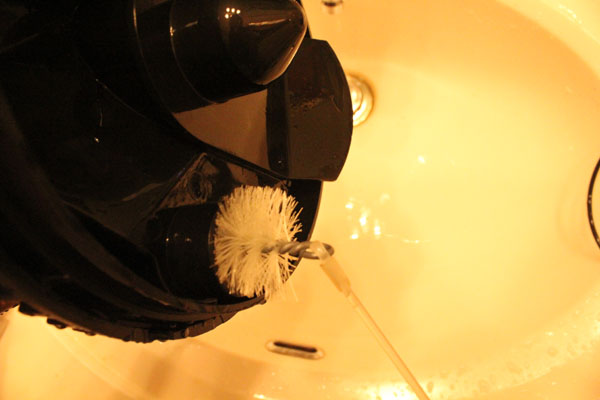 How to Maintain Your Aquarium Filter
Aquarium filtration saw monumental advances in technology du
How to Maintain Your Aquarium Filter
Aquarium filtration saw monumental advances in technology du
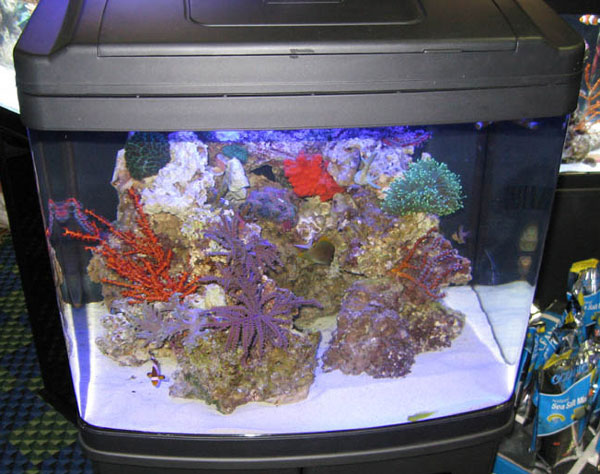 Marine Nano Tank Problems
Marine Nano Tank Problems
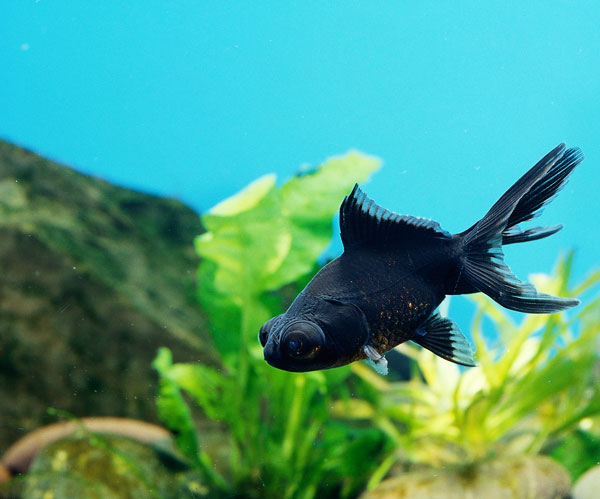 Fish and Fungus
Black Moor Q. I have two large black moor goldfish, one larg
Fish and Fungus
Black Moor Q. I have two large black moor goldfish, one larg
Copyright © 2005-2016 Pet Information All Rights Reserved
Contact us: www162date@outlook.com